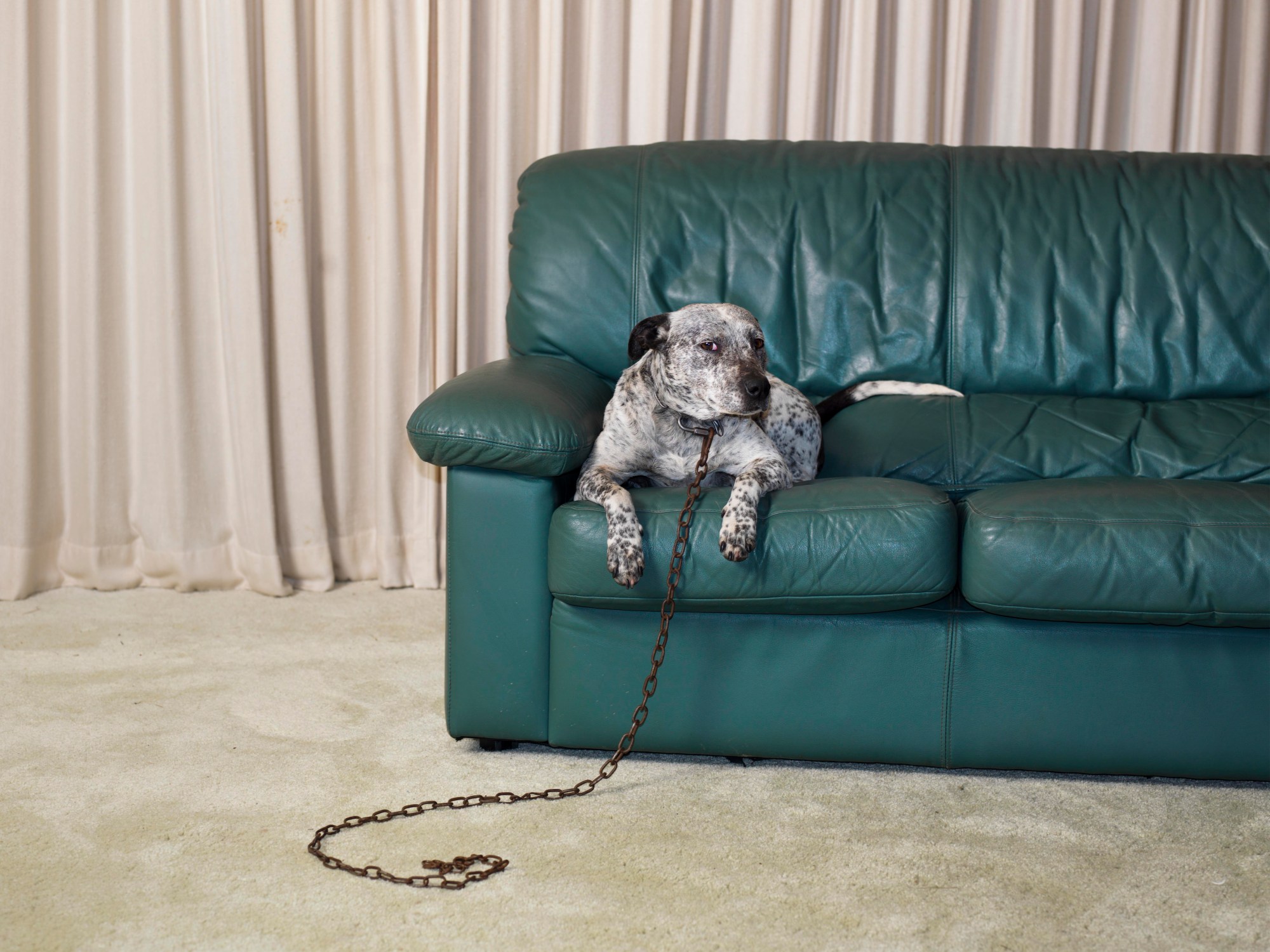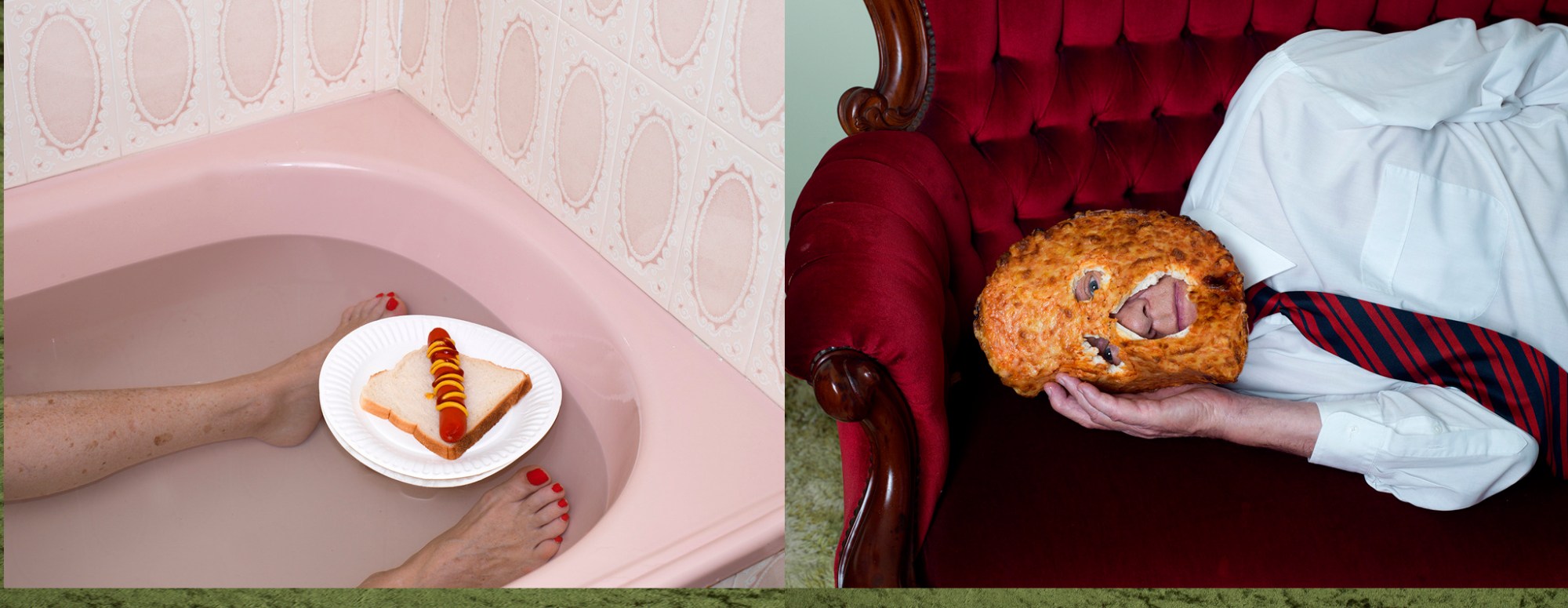While many Australians who move to the US head towards New York or California, you can find Chase Middleton in Sharon, Connecticut, wandering into bars at the last call and seeing who’s around. Her photos are beautifully awkward compositions, something she says “just happens” when she gets people in front of her camera. Finishing off her master’s degree at Yale, she’s incredibly humble, forgetting to mention that renowned artist Laurie Simmons is her mentor.
Chase called me from an old call-out rotary phone to talk about her work. She’s been without Internet and reception for weeks, staying at her aunt and uncle’s house. But it doesn’t seem to faze her. Chase was the girl at high school that would rather be taking photos in her garage than in class. She’s private and individual, and perhaps that’s the reason why she likes to look for her subjects on the outskirts of any hustle and bustle.
“I’m definitely a country girl. I think I probably gravitate toward small towns in America because it just feels like home,” Chase says. “I think in a big city like New York you have anonymity, but in a small town you have to dig deeper into things that you maybe don’t want to look at”.
At a very early stage in her career, Chase has developed a signature style that is both uncomfortable and captivating to look at. We talked to Chase to find out her process.

How did you get into photography?
Well, it’s kind of a silly story. My father likes photography a lot, and alcohol a lot. We went out one night for a long, long dinner and he ended up being a little silly and a little bit drunk. He was very embarrassed about it the next day so he took me to the shop and he bought me a camera. I was about eight. I have all these old pictures of me, from when I was around eight or nine, setting up photo shoots in my garage. Really embarrassing photos of me setting up self-portraits do exist.
I’d love to see those. You should release those photos one day.
It’s probably going to happen. I’m thinking maybe in a book one day.
Did you continue to do work out of your garage?
Yeah, actually. I had a dark room in my room in my garage when I was a teenager and I didn’t really like school very much. I barely went to school. In fact they tried to kick me out of school because I was absent so much. Mainly because I was either in my room, garage or driving around in my car.

And now you study at Yale. What’s that like?
I’ve actually spent a lot of time in America. My sister lived here for a long time and my aunt married an American so I went to visit Yale when I was quite young and I just really knew that that’s where I wanted to be. It’s the place where a lot of the photographers that I admired had gone to school. So it seems like the place to be.
One of your projects, “Terminal Mystery”, you did whilst still in Australia. Tell me about it.
My mother lives in this town called Iluka, a small fisherman’s village with a large retired population. I don’t know what it was about the people, but they were just incredibly trusting and they were very open to spending time with me. I don’t know why they all opened up. I’d meet them and then an hour later I’d be in their homes taking pictures of them.
The people in your photos look quite awkward. How do you get them to look like that?
I feel like the people pick me. It’s usually the person at the bar that doesn’t have anyone to talk to. I end up in a conversation with them and it’s more of a collaborative thing. I don’t really have that much control over it. I think maybe I’m awkward around them so the photos end up looking awkward.

What have you been working on whilst you’ve been in America?
I’ve been taking a lot of photos in West Virginia, Cornwall, Connecticut and Rhode Island for my series “Nostalgia for the Mud”. It’s been a similar process as “Terminal Mystery”, where I go into bars late at night and see who’s around at the last call, and then meet up later to take photos.
How many of the locations and props in “Nostalgia for the Mud” were planned?
Well, there’s only so much planning you can really do if you’re trying to make it relatively spontaneous. I have this photo of a young boy beside a cage with a picture of the pope above him. I was setting up for a different photo and he happened to be behind me and I quickly turned around and got the photo. But I do look for particular spaces that feel familiar to me and when they come together there’s a similar color palette, but it’s not really something I set out to do. It just kind of happens that way.
What about the image with the boys with their hands up? How planned was that?
I grew up in a relatively religious family, so I’m interested in ritual and organized meetings. I happened to be in Rhode Island at this place called twin oaks all of the boys were just working there. I just happened to go in one day and they were all working and I just asked if they would you mind sitting down for five minutes and putting their hands up in the air. And they did it. They were so lovely and it was a really quick thing that happened. So yeah, a lot of it is quite spontaneous.

What are you working on now?
I’m currently in Sharon starting a new project. I’m at my aunt and uncle’s place. It’s so crazy. It was built in the 1700’s and it’s kind of terrifying out here. There’s no Internet, no cell reception and only one call-out old rotary phone. I’m lucky because my mentor Laurie Simmons is just right around the corner. I’ve been archiving some stuff for her. But this place is really magical. Sometimes, when I go visit her I’ll look at Instagram and realize I’m not really missing out on anything.
Do you have any exhibitions coming up?
Let me think, what do I have coming up? I had something at the Red Hook Labs for new artists. I think it’s closing in a couple of days actually. I’m not sure. I’m so bad at this. Because I have no Internet, if something good hit’s the Internet, I wouldn’t even know. You’ll probably release this article and I won’t even see it for another month.
Chases’s exhibition at Red Hooks Labs is now closed, but you can keep up to date with her latest work on her website .

